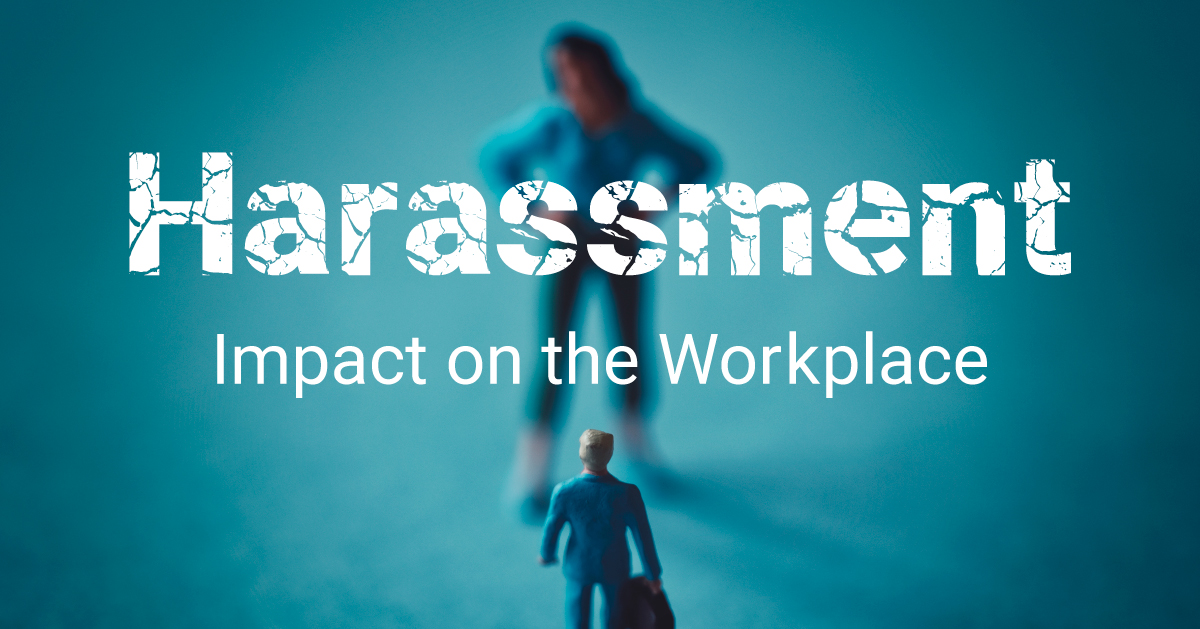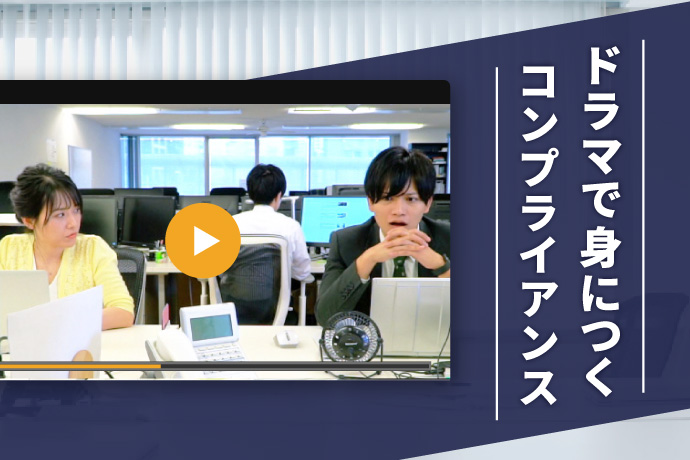What is Care Harassment? Related legislation and preventive measures that companies can take

In recent years, "care harassment" has become a social issue. Care harassment is a type of harassment in which a person is harassed or treated unfairly by a business or supervisor when balancing work and caregiving.
Although care harassment is still less recognized than sexual harassment or power harassment, the number of people who are victims of it is still uncountable. Companies need to work together to prevent care harassment.
In this issue, we will introduce the characteristics of care harassment, specific examples, and the initiatives that companies should take.
Contents
- 01Fundamentals of Care Harassment
- Definition of Care Harassment
- Specific Examples of Care Harassment
- Main Causes of Care Harassment
- 02Legal System Related to Care Harassment
- nursing care leave
- Nursing care leave benefits
- nursing leave
- Limitations on overtime work (exemption from overtime work)
- Measures to Shorten Prescribed Working Hours
- Restrictions on late-night work
Fundamentals of Care Harassment

Balancing caregiving and work requires the understanding of those around you, including your workplace. Here, we will explain the definition and specific examples of care harassment, as well as provide some background on the recent attention it has attracted.
Definition of Care Harassment
Care harassment is an act of harassment directed at a person who is working and caring for a family member.Harassment is harassment or offensive remarks or actions toward others. Typical examples are known as "sexual harassment (sexual harassment)," "power harassment (power harassment)," and "moral harassment (moral harassment). Care harassment is similarly often abbreviated as "care harassment.
Care harassment is often received from supervisors or coworkers at the workplace and is considered a serious problem that prevents people from balancing work and caregiving. Harassing behavior directed at caregivers, facility users, or their families has also been identified.
With the recent increase in the number of people certified as requiring nursing care, the elimination of care harassment is an issue for Japanese society as a whole.
Specific Examples of Care Harassment
Patterns of care harassment vary widely. For example, there are cases of improper handling of personnel evaluations.
Cases in which an employee who requests nursing care leave is fired, terminated, or demoted are typical of care harassment in which supervisors and others use their superiority over the employee in the workplace to harass the employee.
Care harassment by words and deeds, not by actions, is not uncommon. Specifically, there are those who prevent care leave users from using the system or use unfair words such as "I envy you because you don't have to work overtime," "Your wife should take care of you," "Why don't you stop claiming care benefits? Some people prevent the use of the nursing care leave system or use unfair words or deeds.
Cases such as not giving jobs to employees who have taken nursing care leave are also occurring. As a result of such care harassment, some employees leave their jobs because they are unable to balance work and nursing care.
Main Causes of Care Harassment
Not as well recognized as other forms of harassment
One factor contributing to rampant care harassment is a lack of awareness.
Typical acts of harassment include "sexual harassment," "power harassment," "moral harassment," and "maternity harassment," and a common understanding of what not to do is spreading through in-house training.
Since care harassment has only become well known in recent years, it is not as widely recognized as the above-mentioned acts of harassment.
Many people have never heard of it in the first place, and in some cases, unintentional words or actions can lead to care harassment.
Stereotypes about caregiving remain.
The stereotype of caregiving as something to be done by women is still deeply entrenched in Japanese society.
In recent years, women's participation in society has accelerated and the number of households with both husband and wife working has increased. The government is also making various efforts to realize a gender-equal society.
However, social conventions and customs regarding gender roles, such as "women should do ____" and "men should do ____," have been slow to change. As a result, some people feel uncomfortable about men taking nursing care leave or try to push nursing care onto women.
It is not clear when caregiving begins and ends.
The beginning and end of caregiving are unknown even to those involved. Unlike childcare leave, where the employee returns to work as the child grows up, there is no definite period of time set.
Because of the nature of such nursing care, it is not uncommon for managers and supervisors to believe that they cannot entrust important tasks to personnel who are overwhelmed with nursing care, and that they want employees who do not know when they will return to work to quit.
Back to ContentsLegal System Related to Care Harassment

An understanding of the legal systems related to caregiving is essential to understanding care harassment. Here we explain the features and conditions for using nursing care leave, nursing care leave benefits, and nursing care leave.
Nursing Care Leave System|Ministry of Health, Labour and Welfare
nursing care leave
Nursing care leave is a support system that allows workers to take care of family members in need of nursing care. The Ministry of Health, Labor and Welfare (MHLW) is promoting this system to help workers balance work and nursing care.
A user of nursing care leave is required to submit a request to the company at least two weeks prior to the start of the leave. A total of 93 days can be taken per family member, and the company cannot refuse a request from a worker who meets the conditions for use.
Since it is a public program, it is available regardless of whether or not an in-house program is in place.
Nursing care leave benefits
The nursing care leave benefit is a benefit provided to certain workers who have taken nursing care leave. It is a benefit system based on employment insurance, and the employer applies for it at Hello Work.
The monthly benefit amount is calculated as "daily wage at the start of absence x number of days paid (30 days) x 67%," but may be reduced if the employee receives a separate allowance or salary during the absence.
nursing leave
Nursing care leave is a system that allows workers to take a short period of time off to care for a family member in need of nursing care. Like nursing care leave, it is regulated by the Child Care and Family Care Leave Law.
If one person requires nursing care, 5 days/year can be obtained, and if two or more people require nursing care, up to 10 days/year can be obtained. It does not matter whether there is an in-house system or not, the company cannot refuse the use of the system.
Limitations on overtime work (exemption from overtime work)
Overtime work restrictions are a system under which workers must be exempted from working overtime if they apply to care for a family member in need of nursing care. This so-called "overtime exemption" can basically be applied for by any worker (regardless of gender) who cares for an eligible family member.
This service is not available to daily workers, "workers who have been with the company for less than one year" and "workers who work two or fewer days per week" who work for a company that has a labor-management agreement.
Measures to Shorten Prescribed Working Hours
This system is based on the Child Care and Family Care Leave Law. Once a worker applies for this system, the employer must approve the shortened working hours to reduce overtime work hours. If the system is implemented, the overtime hours per day will be limited to 6 hours in principle.
Restrictions on late-night work
This system prohibits workers from working during the "midnight hours" from 10:00 p.m. to 5:00 a.m. when they are taking care of persons certified as requiring nursing care. Work during these hours is called "late-night work. This system is available to both male and female workers who care for a family member in need of care, but those who work all of their scheduled working hours during the late-night hours are not eligible to use this system.
Back to ContentsWhat Companies Can Do to Prevent Care Harassment

To protect workers from care harassment, it is important for companies and employers to take proactive preventive measures.
Here are some care harassment policies that companies should implement.
Clarify company policy on harassment issues
Management and executives will demonstrate that they will not tolerate care harassment. Clarifying your company's policy on harassment issues can be a strong deterrent.
This will create an atmosphere within the company that encourages employees to take nursing care leave and leave for nursing care. In addition to helping to improve the workplace environment, the program is expected to increase employee motivation and prevent employee turnover.
It is important to include anti-harassment measures in internal company regulations, such as work rules, and to take strict measures if they should occur.
Conduct in-house training
It is effective to disseminate your company's policy against harassment through in-house training. Through repeated practice, employees will acquire the correct knowledge of harassment. This will help to detect and solve problems at an early stage and will make it easier to prevent care harassment.
It is also effective to change the content of training for each position, such as training for general employees and training for managers. While it is possible to outsource training to an external vendor, an e-learning system can provide the best in-house training for your company.
Establish a consultation service and internal system
Establish a consultation service that is readily available to victims of harassment. A dedicated room will be prepared within the company to provide consultation services while protecting the privacy of the person consulting.
In such cases, we will appoint a person familiar with harassment issues as the person in charge. The company will set up a mixed-gender staff with multiple members in charge and provide an environment where the consultants feel comfortable and comfortable speaking with them. Establishment of a consultation center is an urgent necessity in the anti-harassment measures.
Since simply establishing a contact point is not effective, it is also important to make employees aware of the situation by displaying in-house posters and distributing business-card-sized portable cards. Make efforts to create a working environment where victims of harassment do not have to cry themselves to sleep.
Conduct questionnaires and hearings to ascertain the actual situation
Conduct surveys and hearings for employees to ascertain the actual situation within the company. Analyze the results of the questionnaires and hearings to understand the actual situation and identify whether or not there is a harassment problem.
Taking preventive measures after the survey is administered also has the effect of earning the trust of employees.
Care Harassment is an e-learning program to improve your understanding.
With the acceleration of an aging society with a declining birthrate, it is said that an era in which balancing work and caregiving will become the norm. Care harassment may eventually become an even more serious social problem than it is today. Both companies and employees need to learn basic knowledge, appropriate responses, and preventive measures to be prepared.
For in-house elearning courses, learningBOX will help you effectively.
learningBOX is a cloud-based elearning platform
and you can easily build training courses online.
Created content will be delivered to employees and you can track their learning progress.
In addition to the flexible content creation, personalized learning will boost each employee's understanding and knowledge by customizable settings.
There will be something you can do to improve your work environment.
▼You may also like:
Back to Contents Back to Article List


















